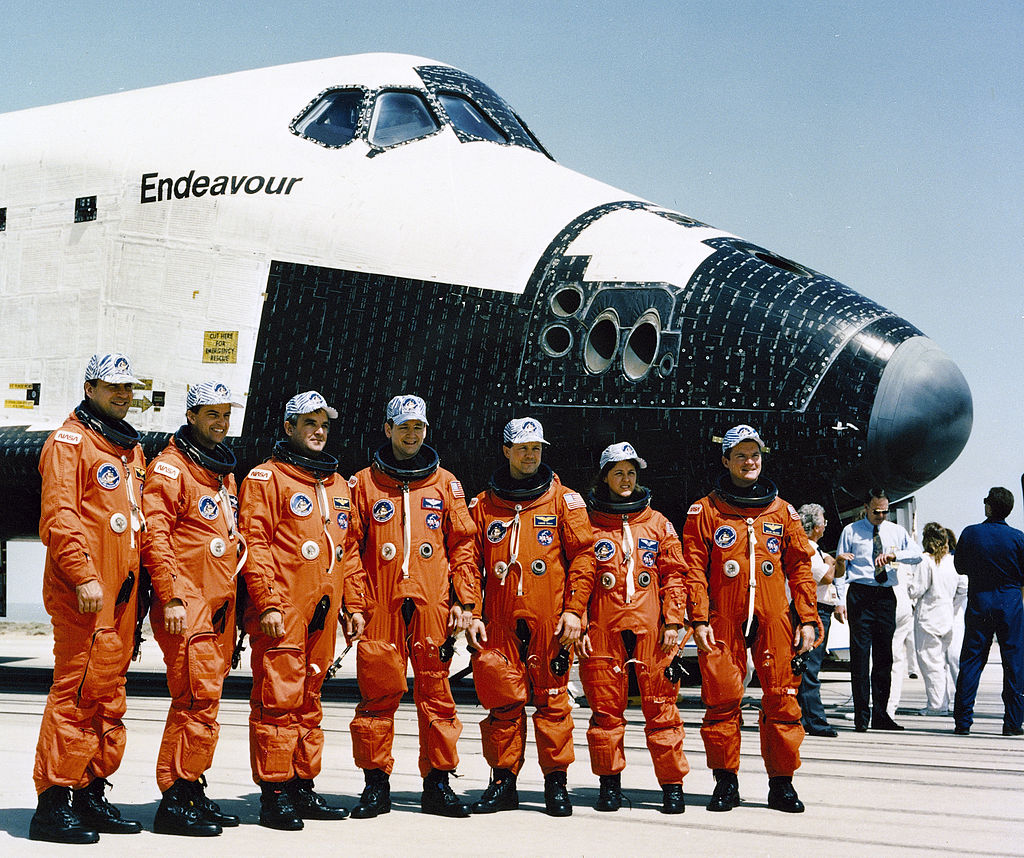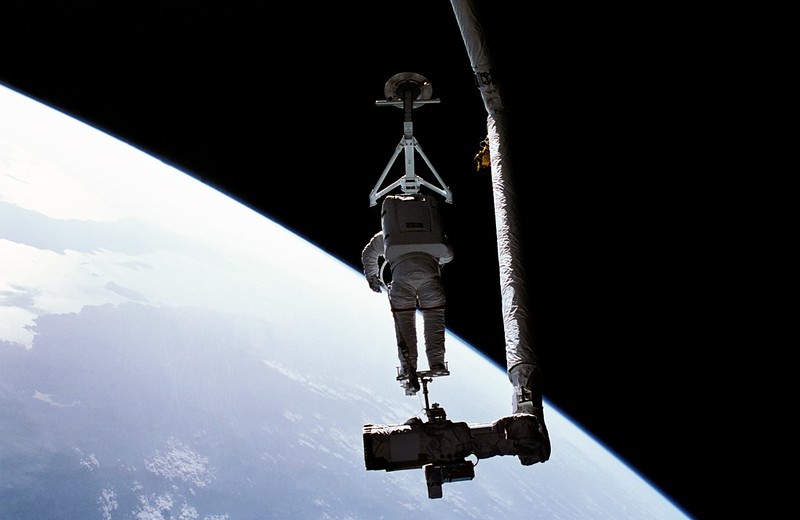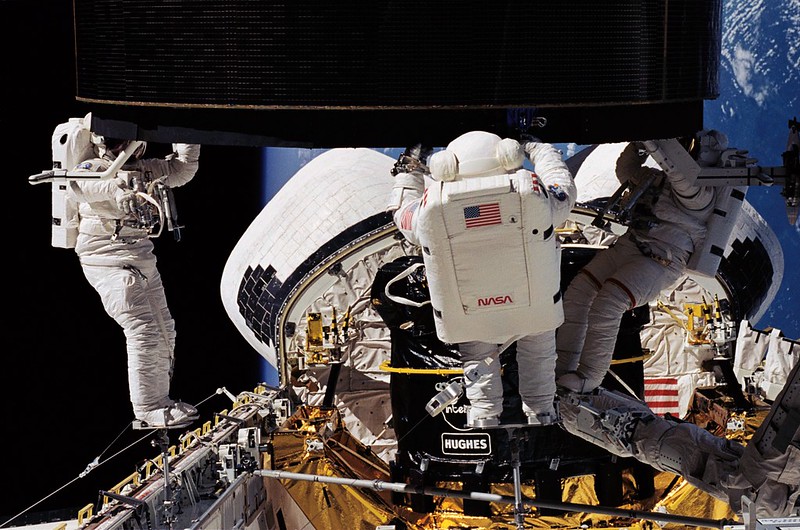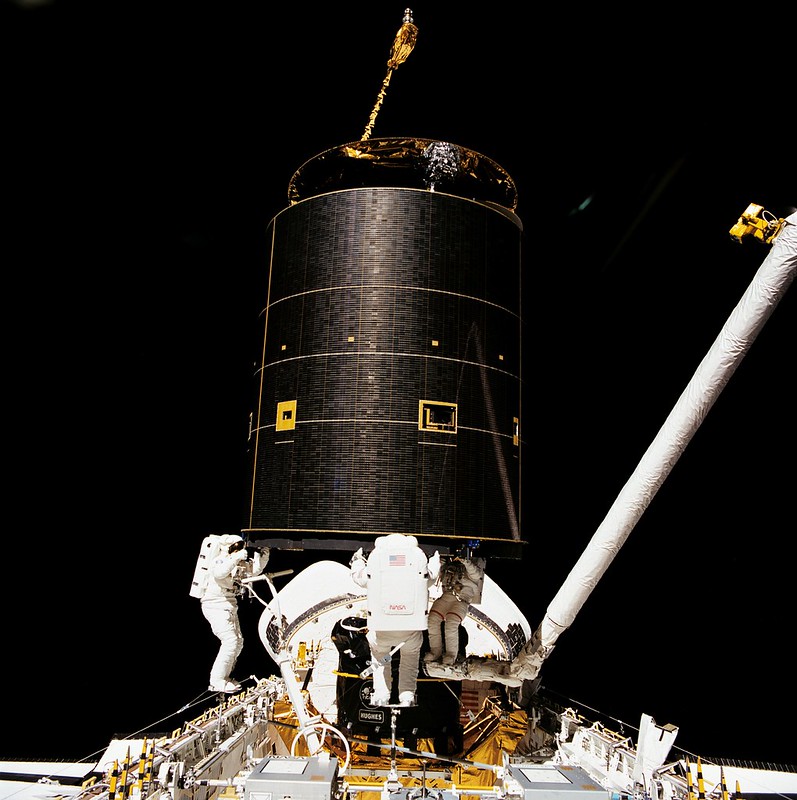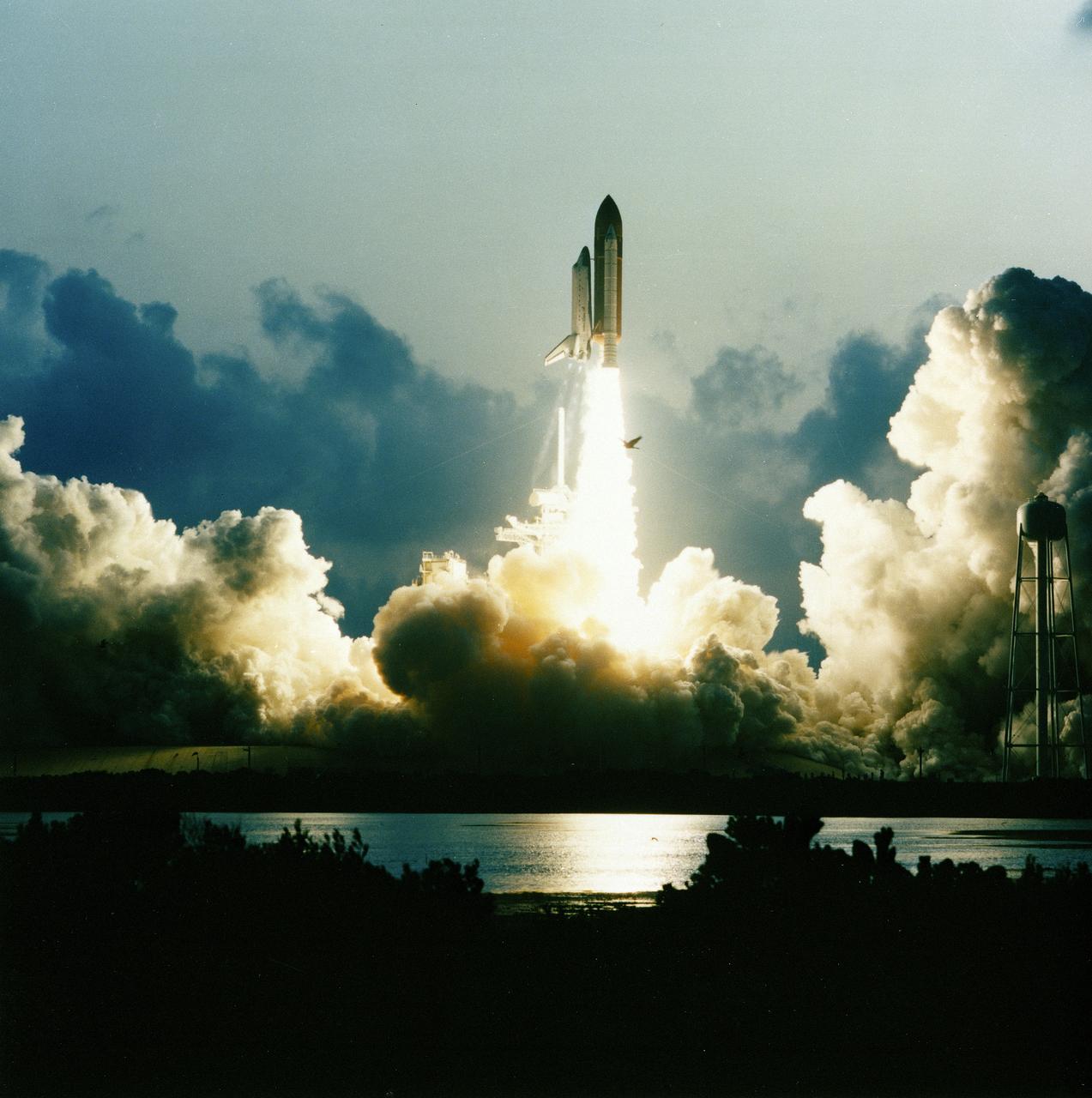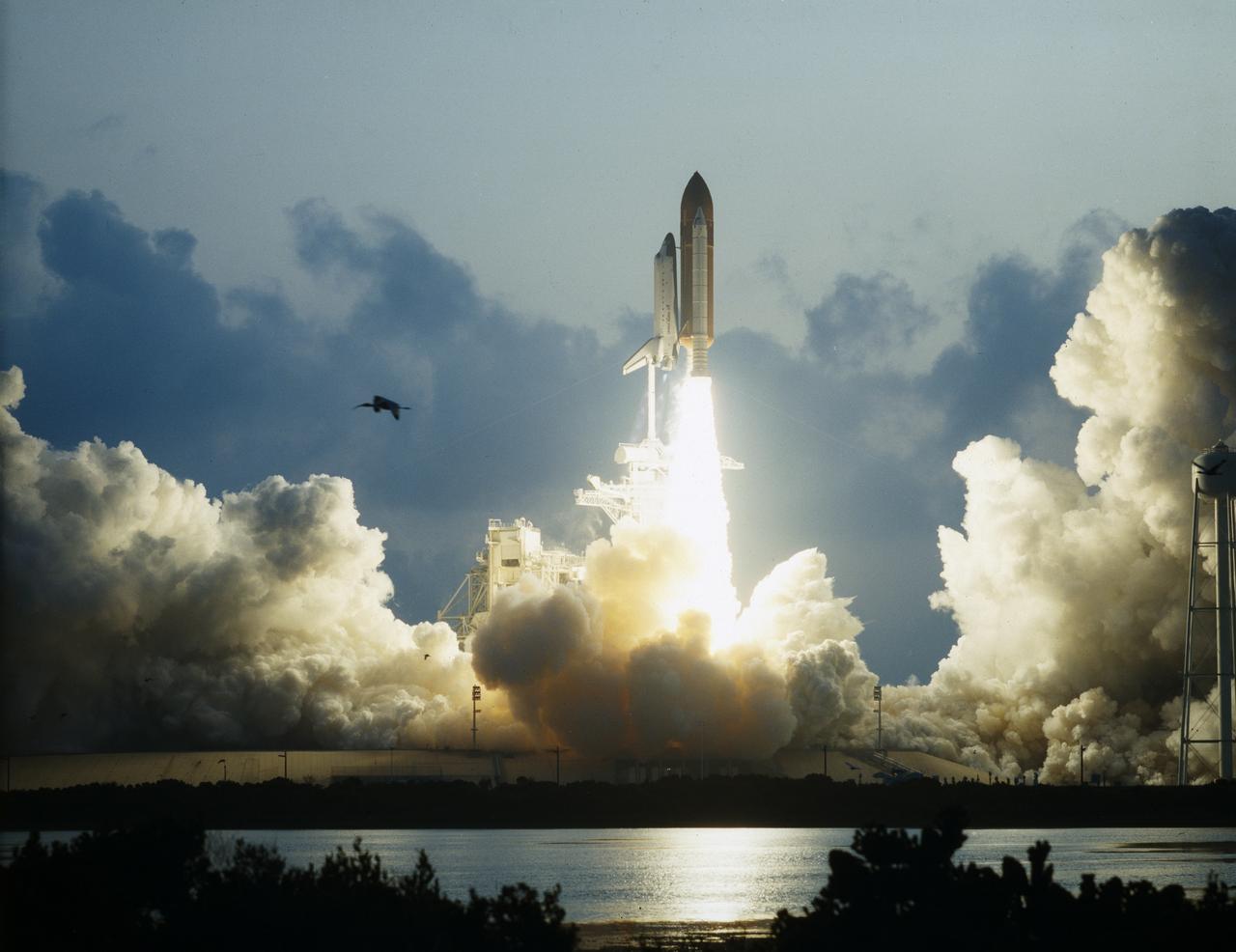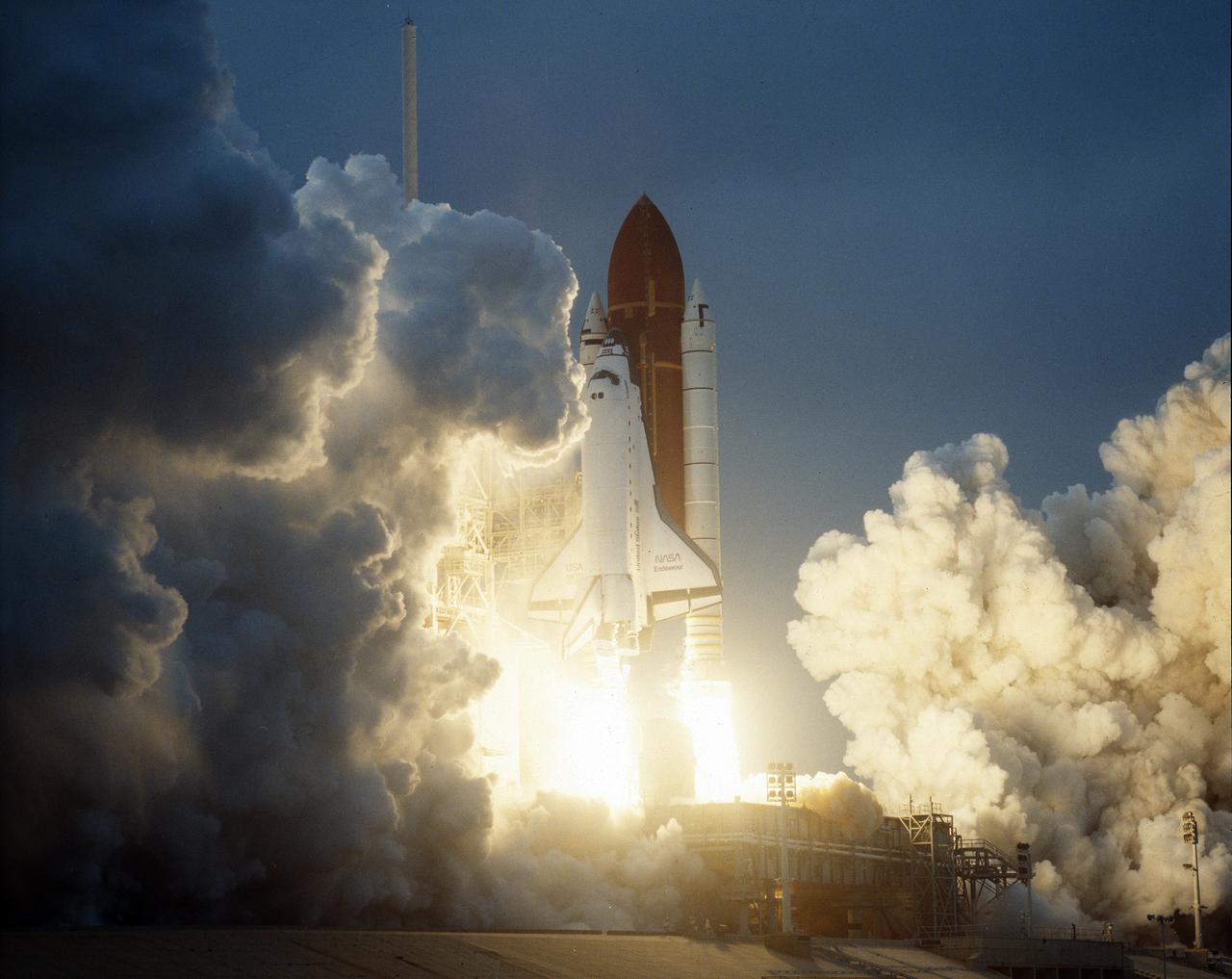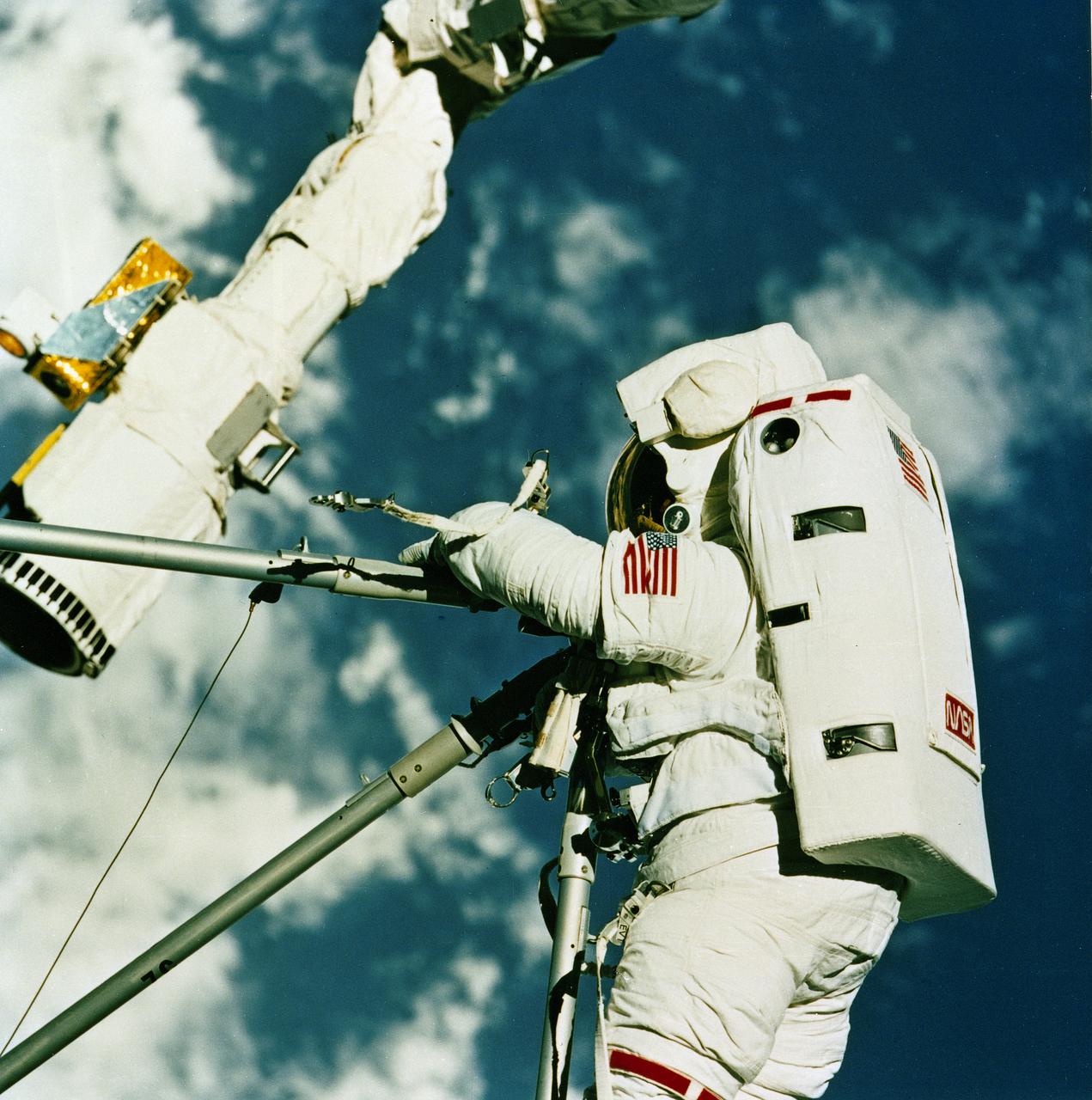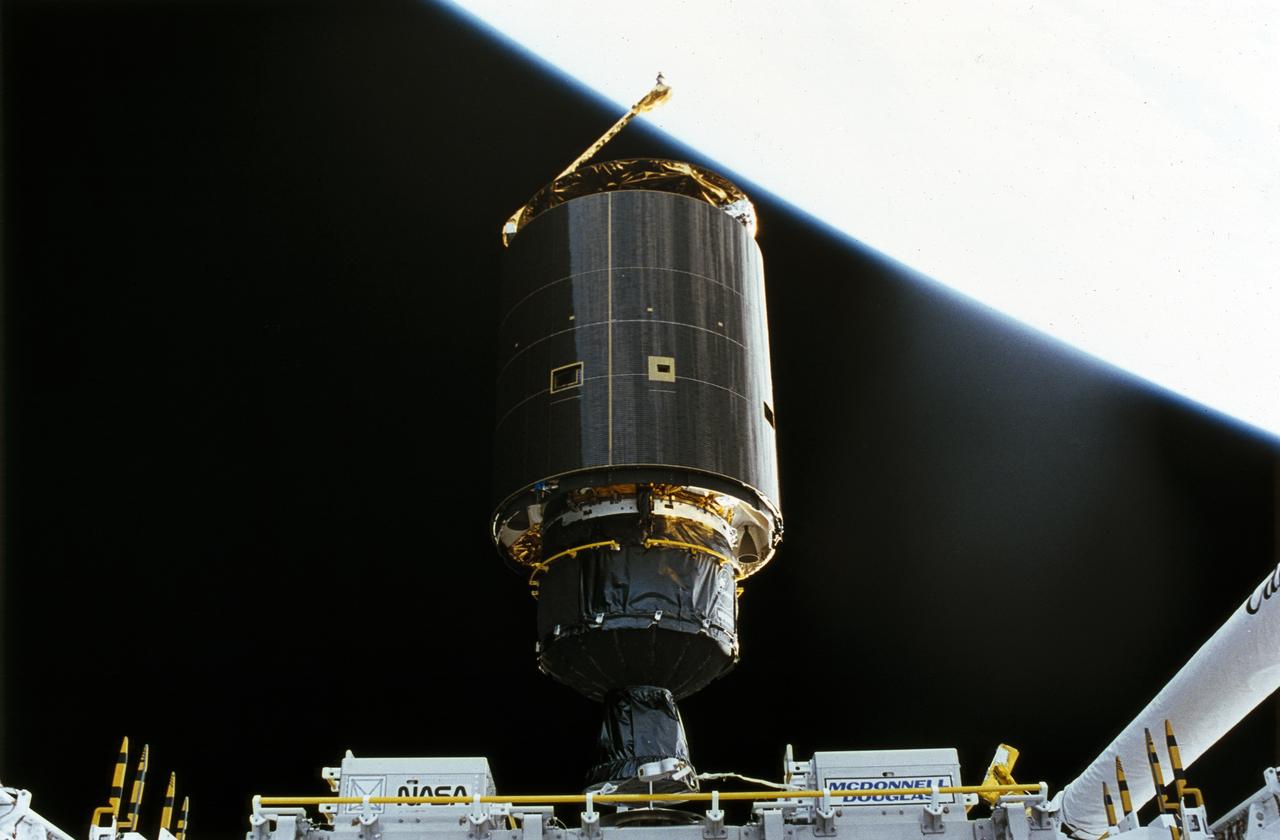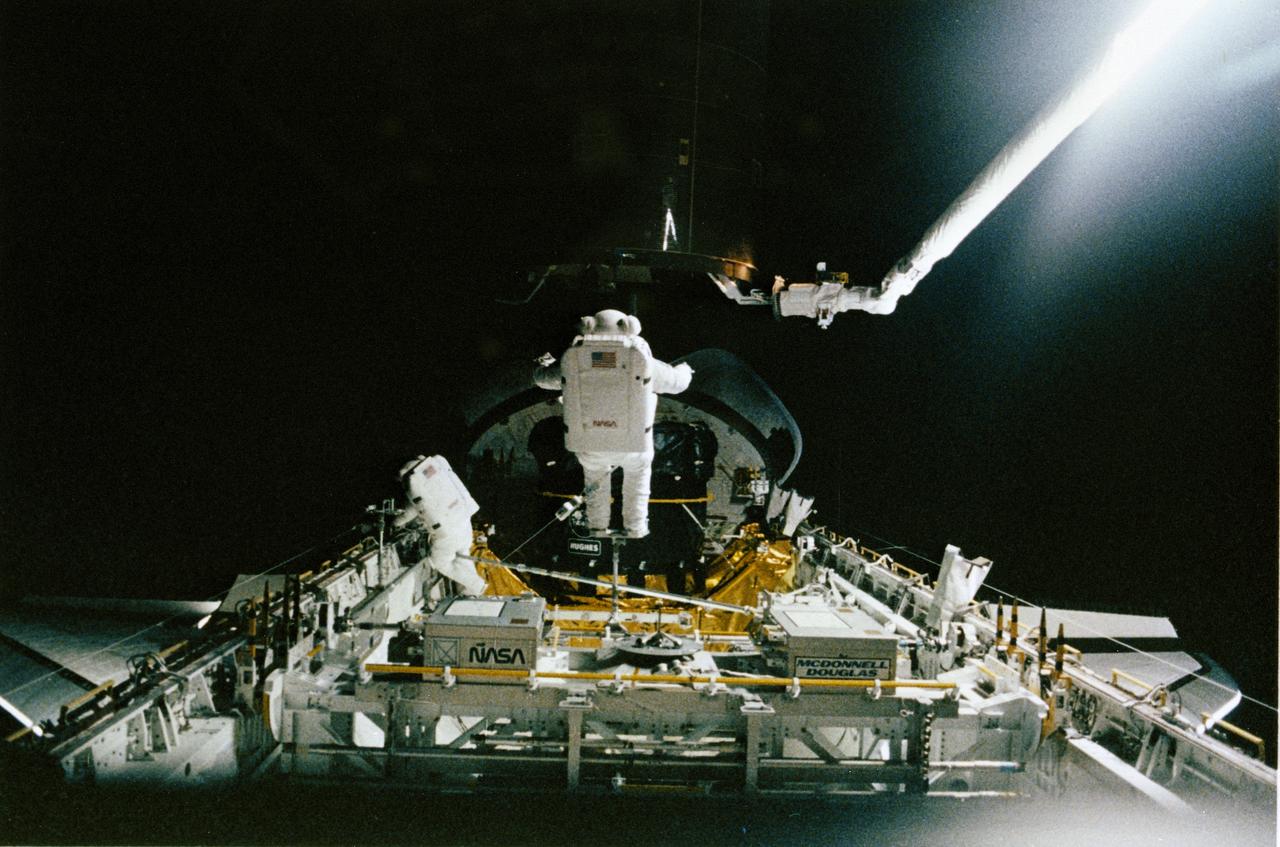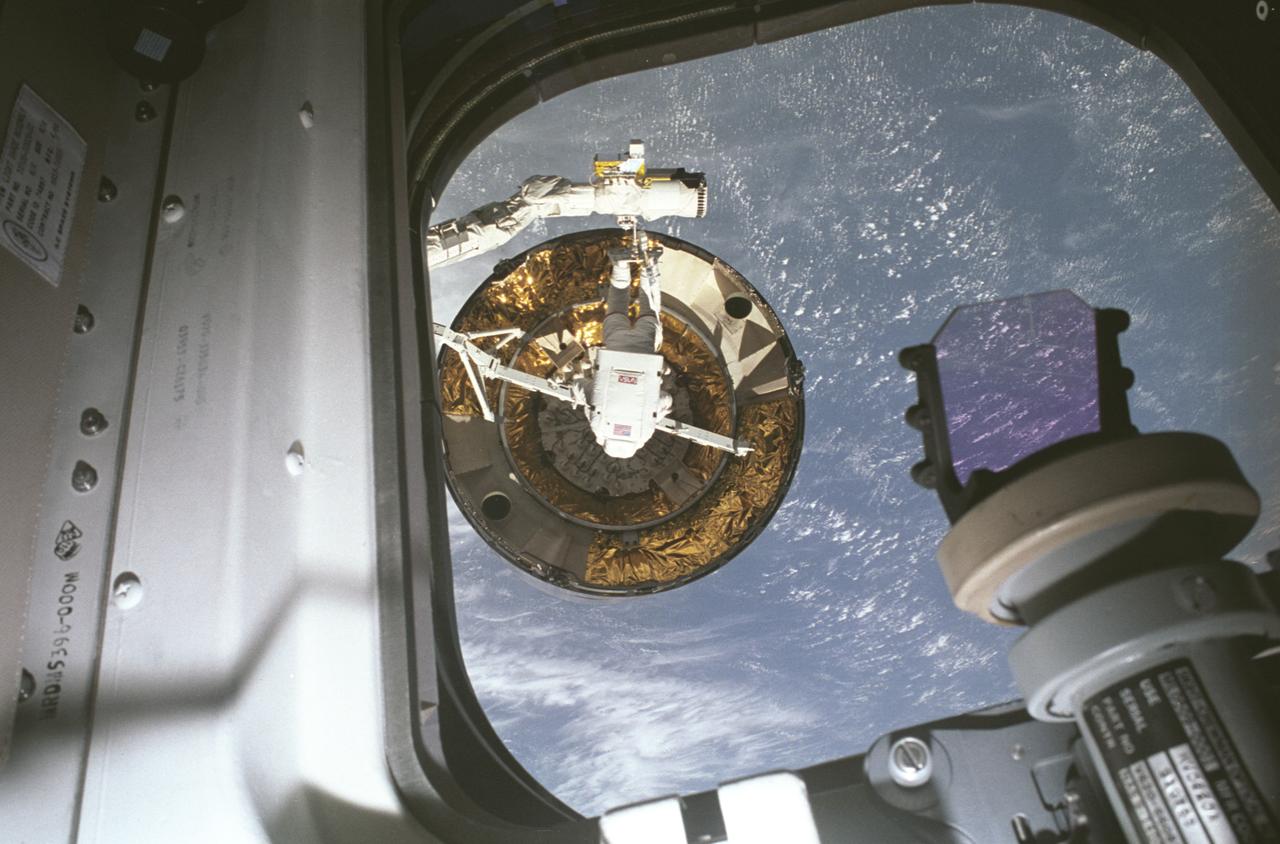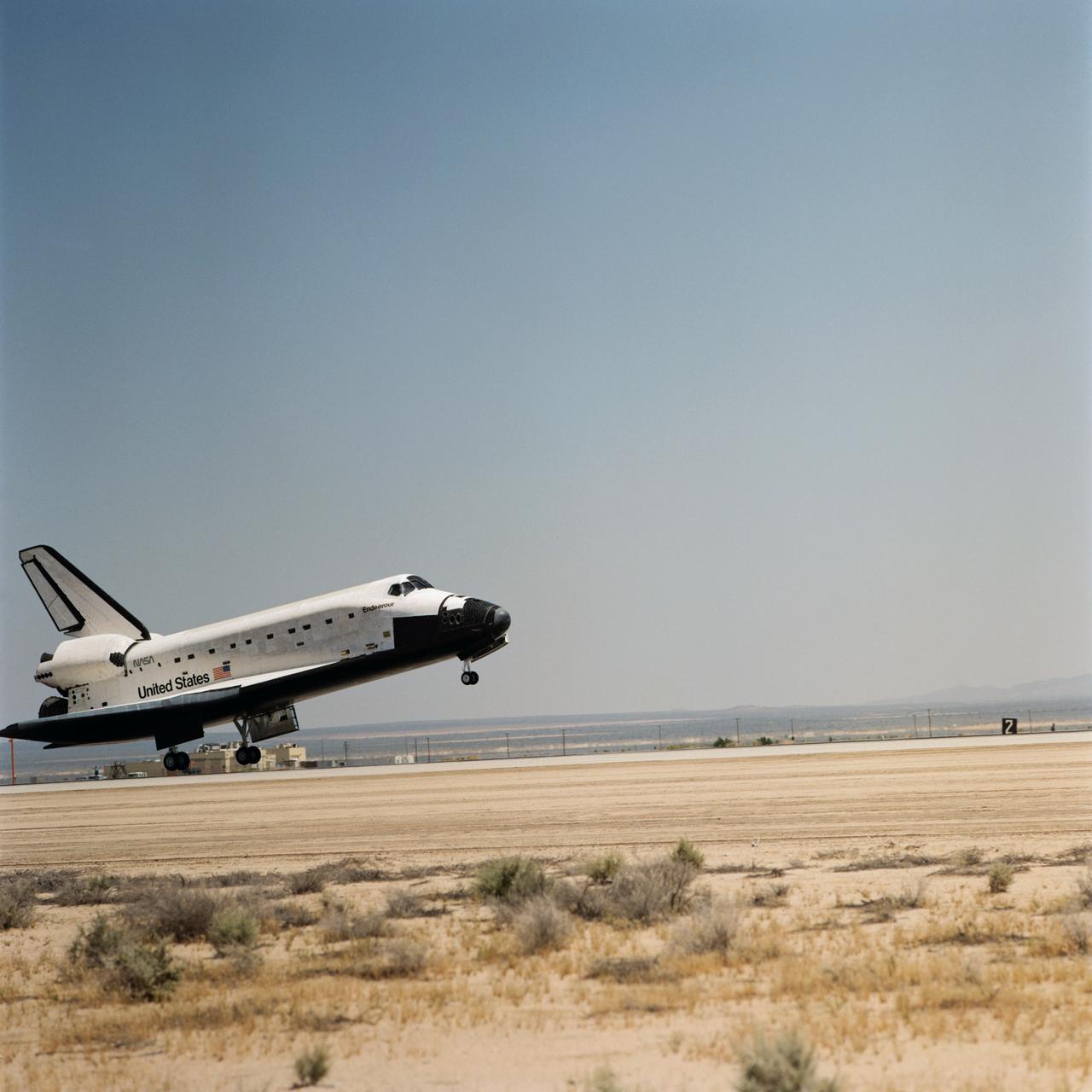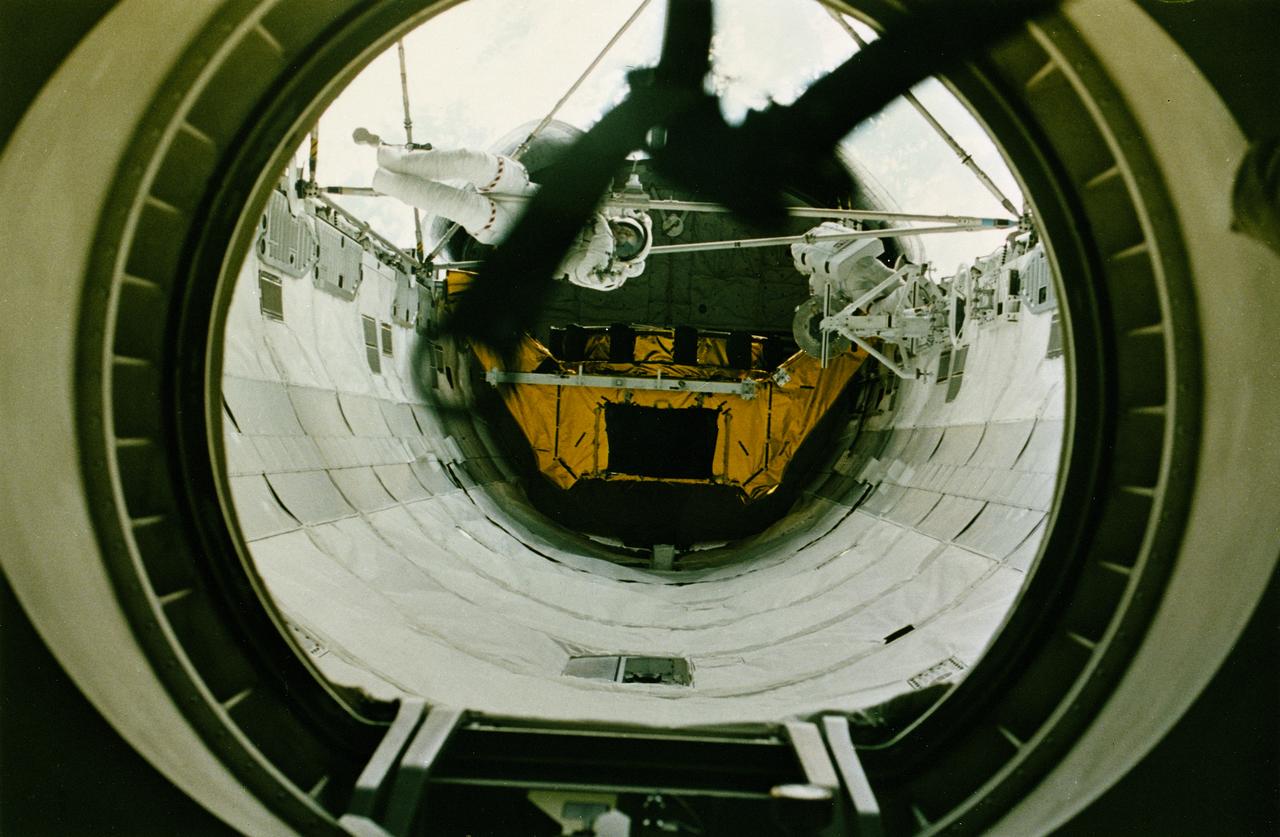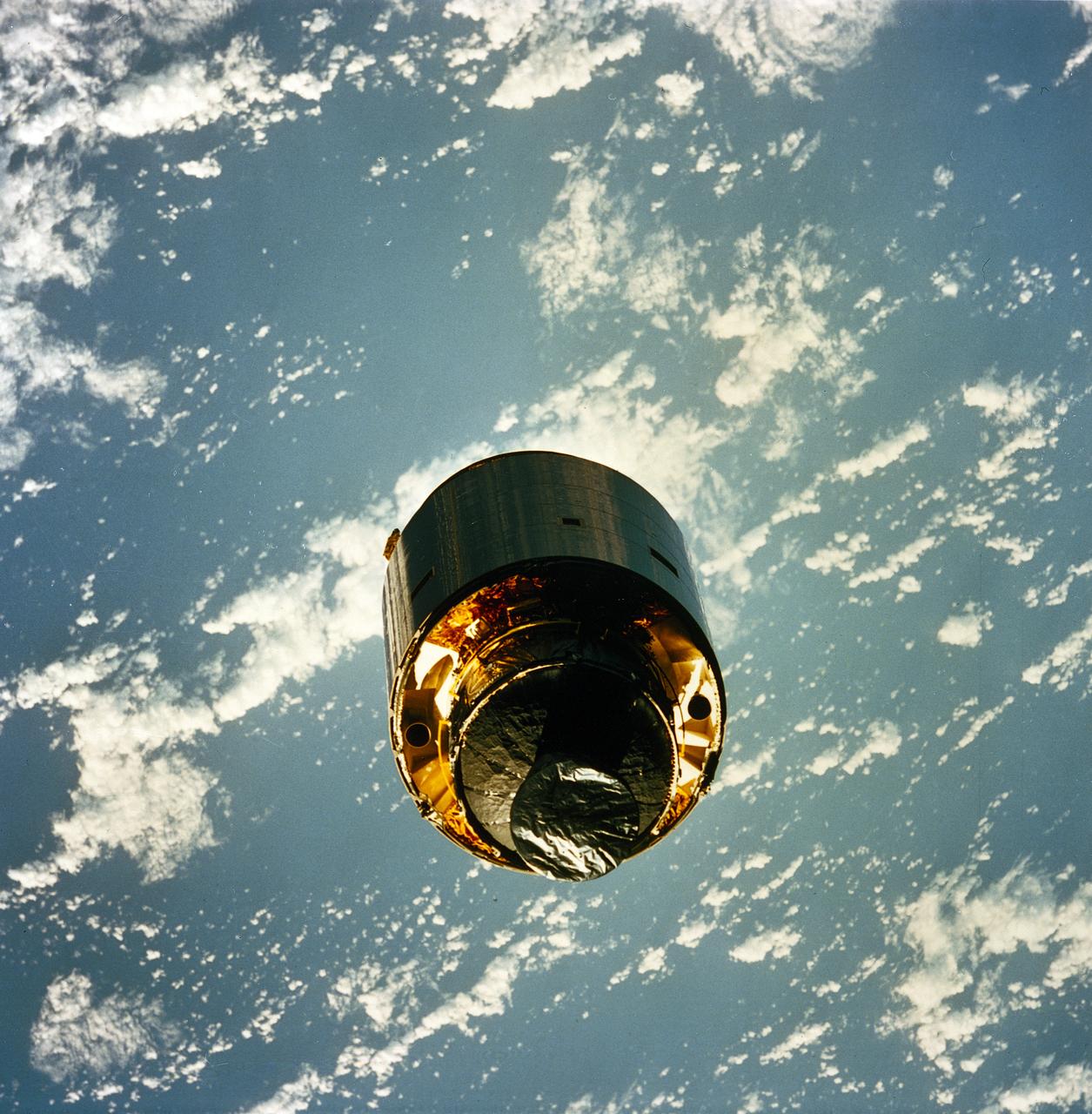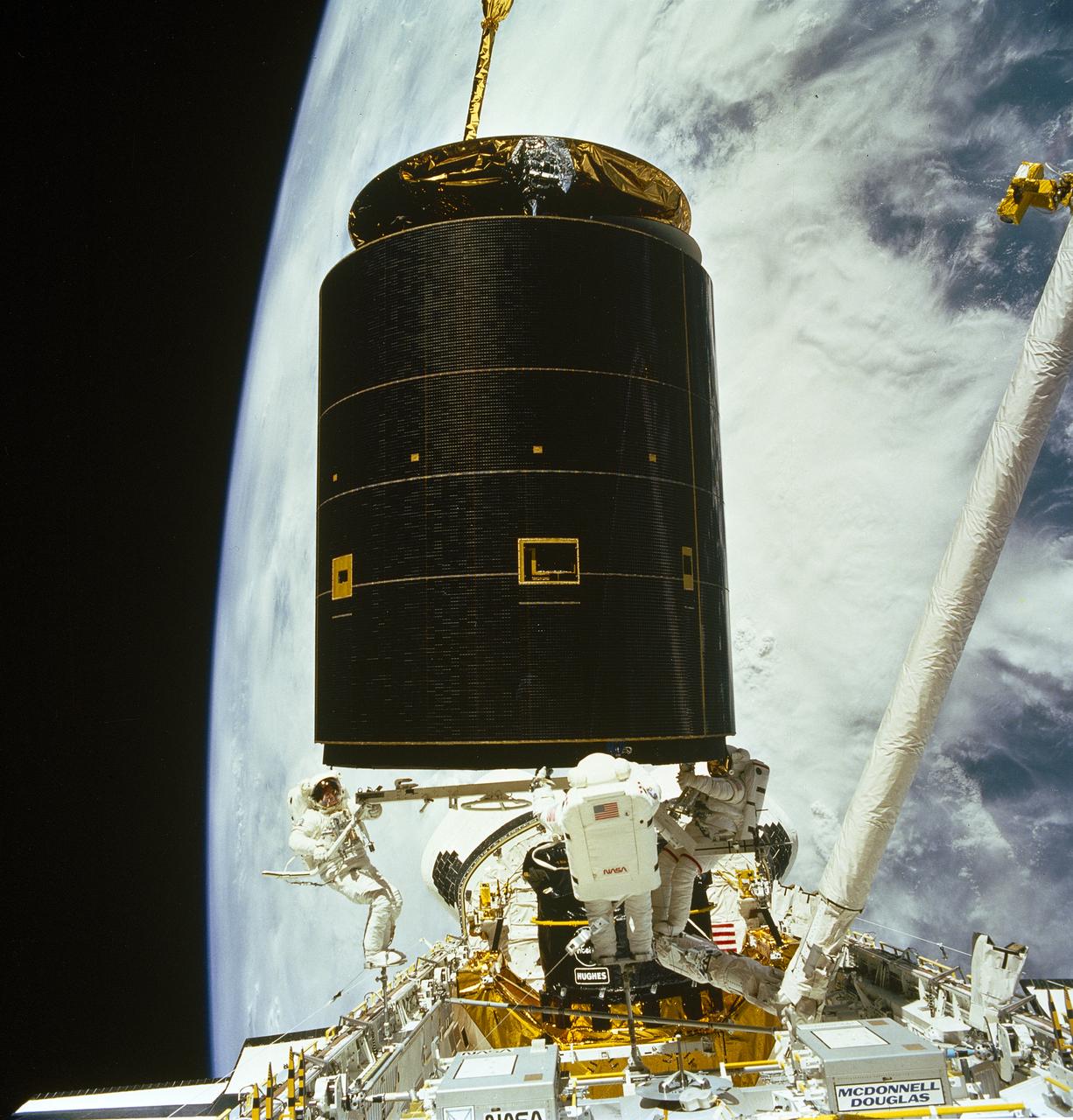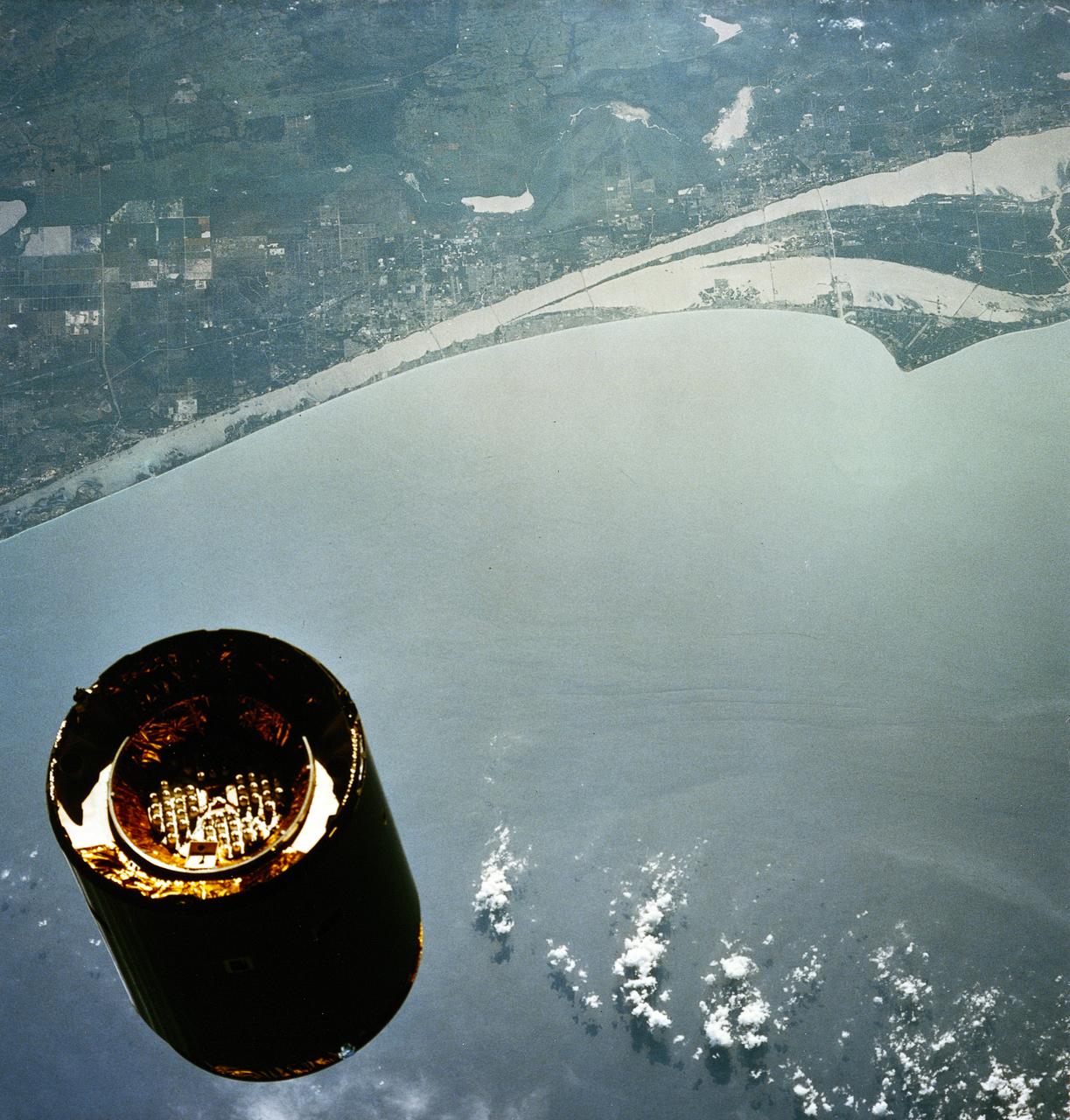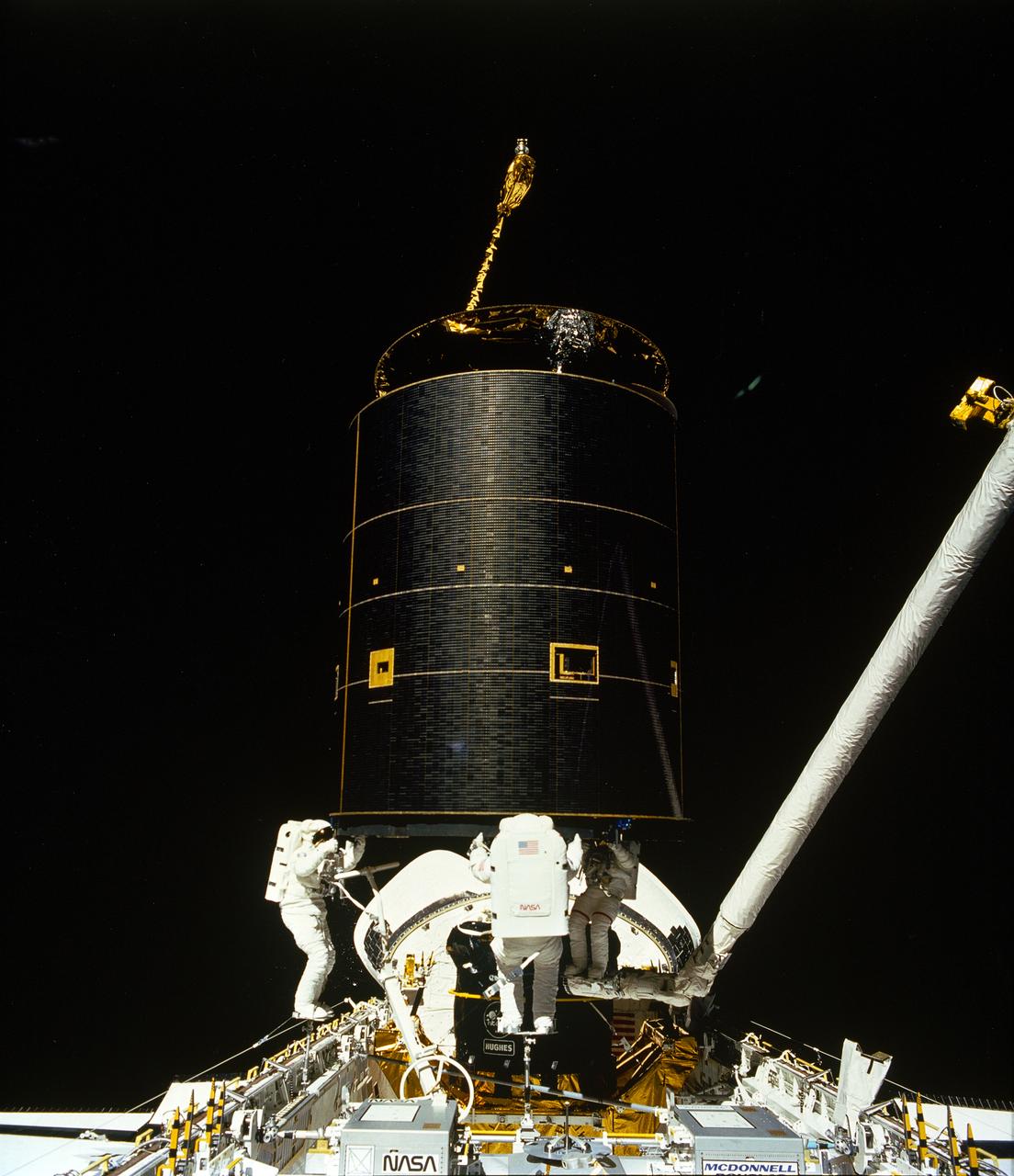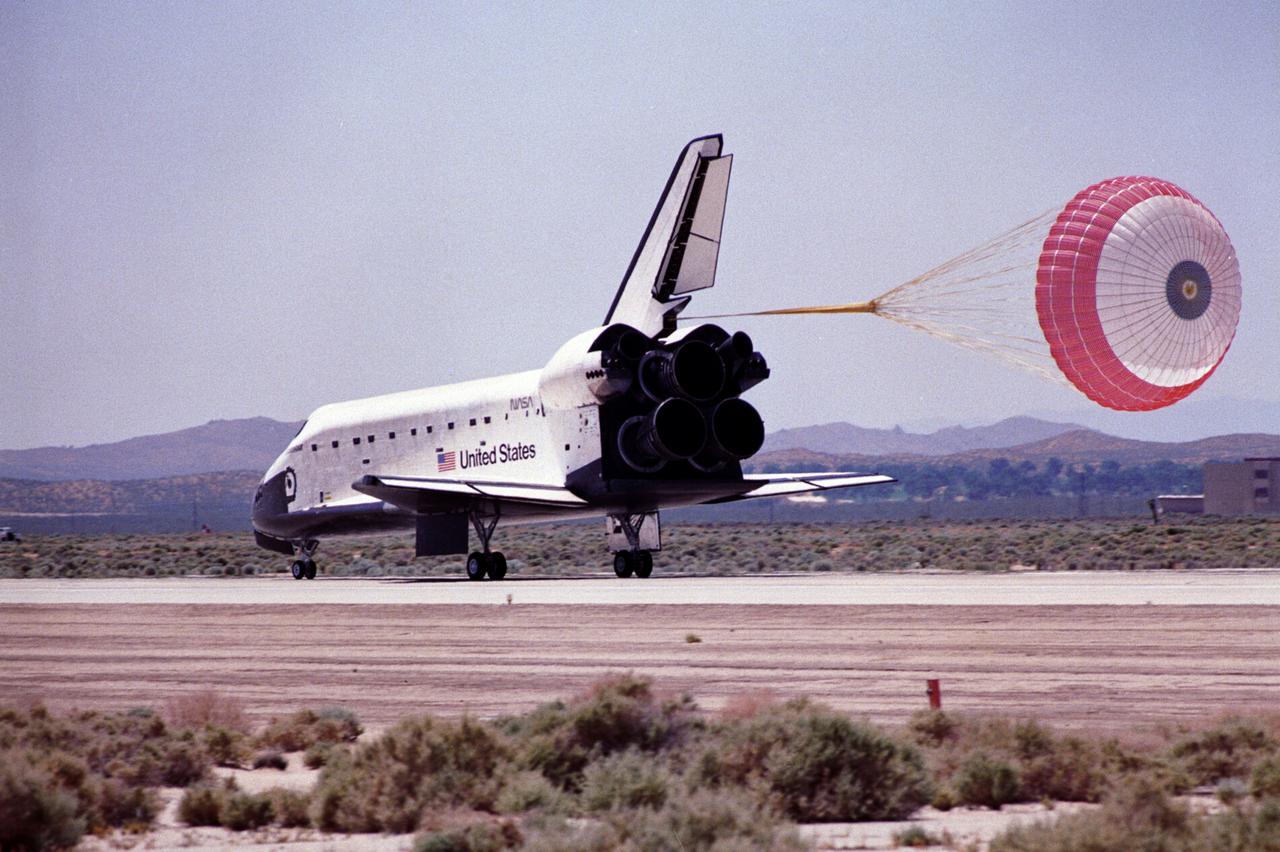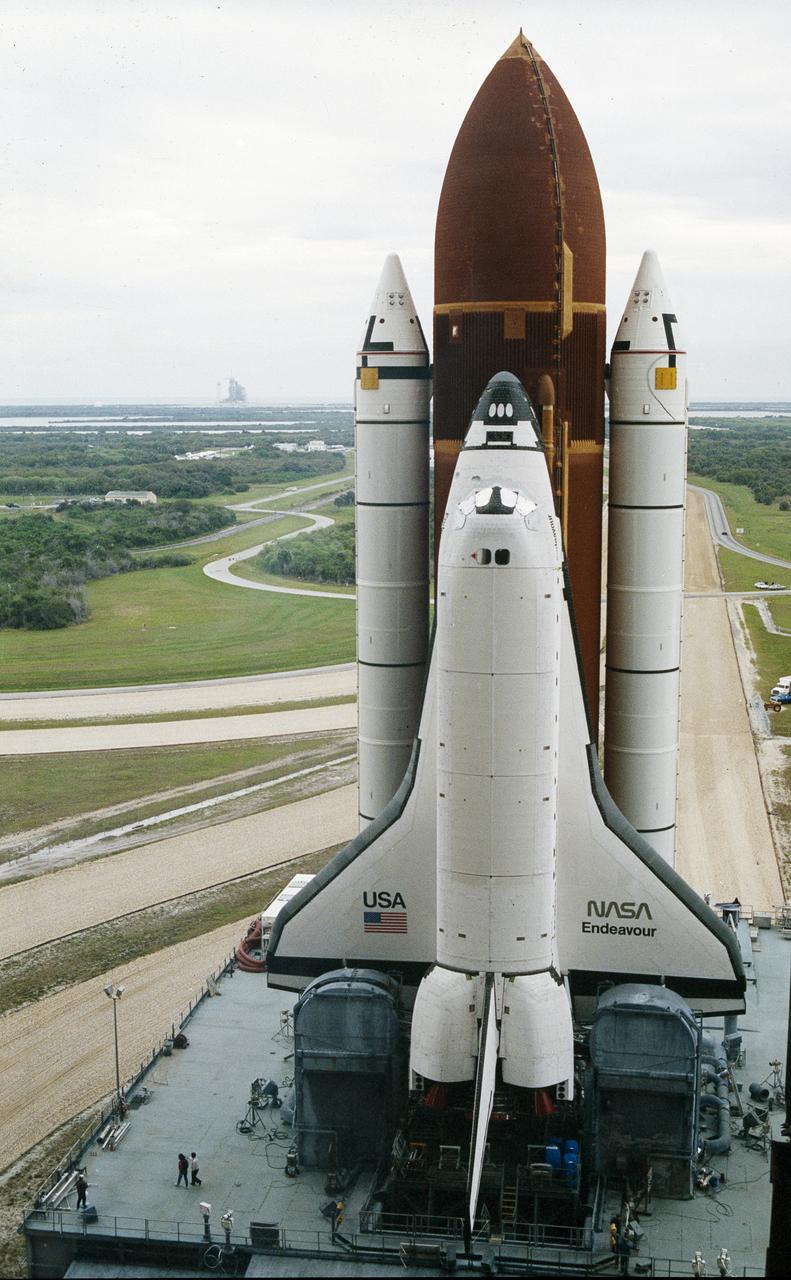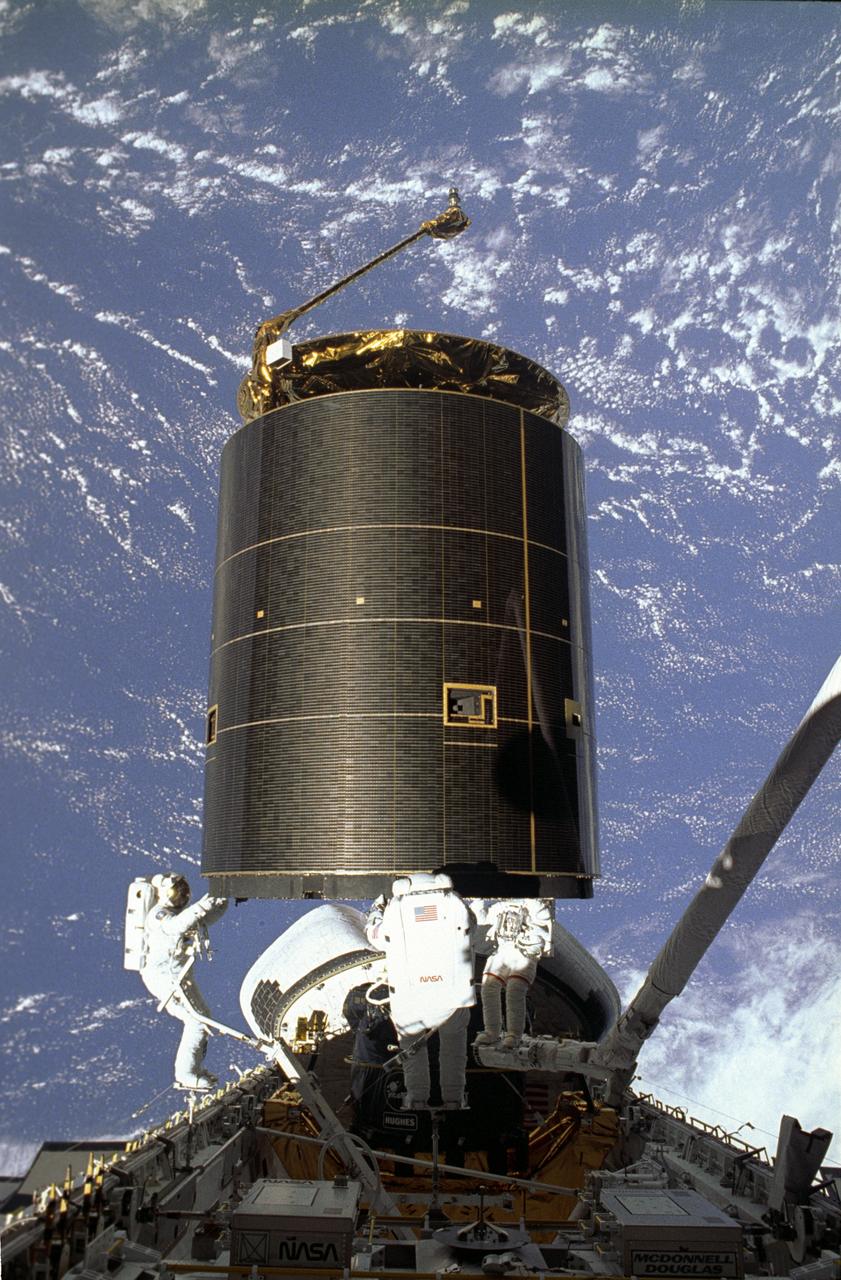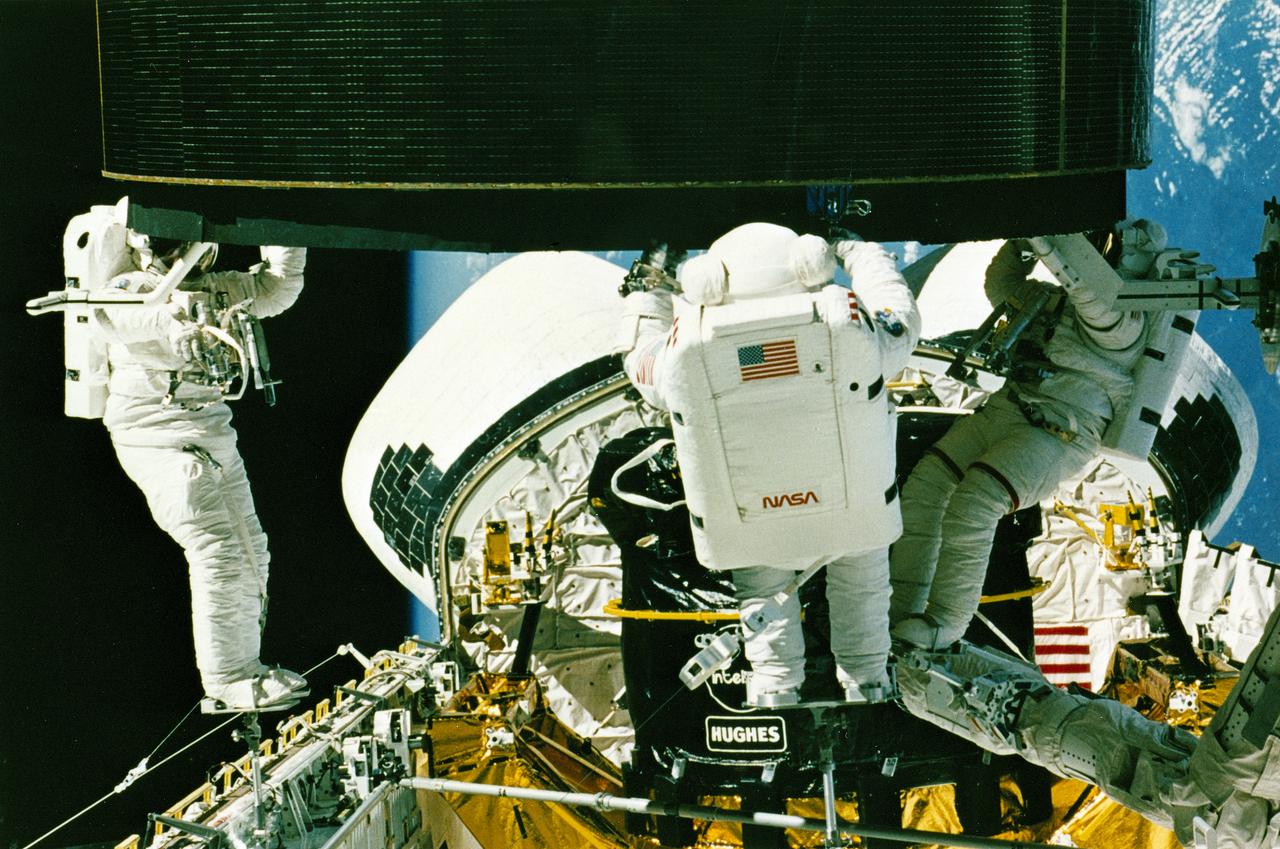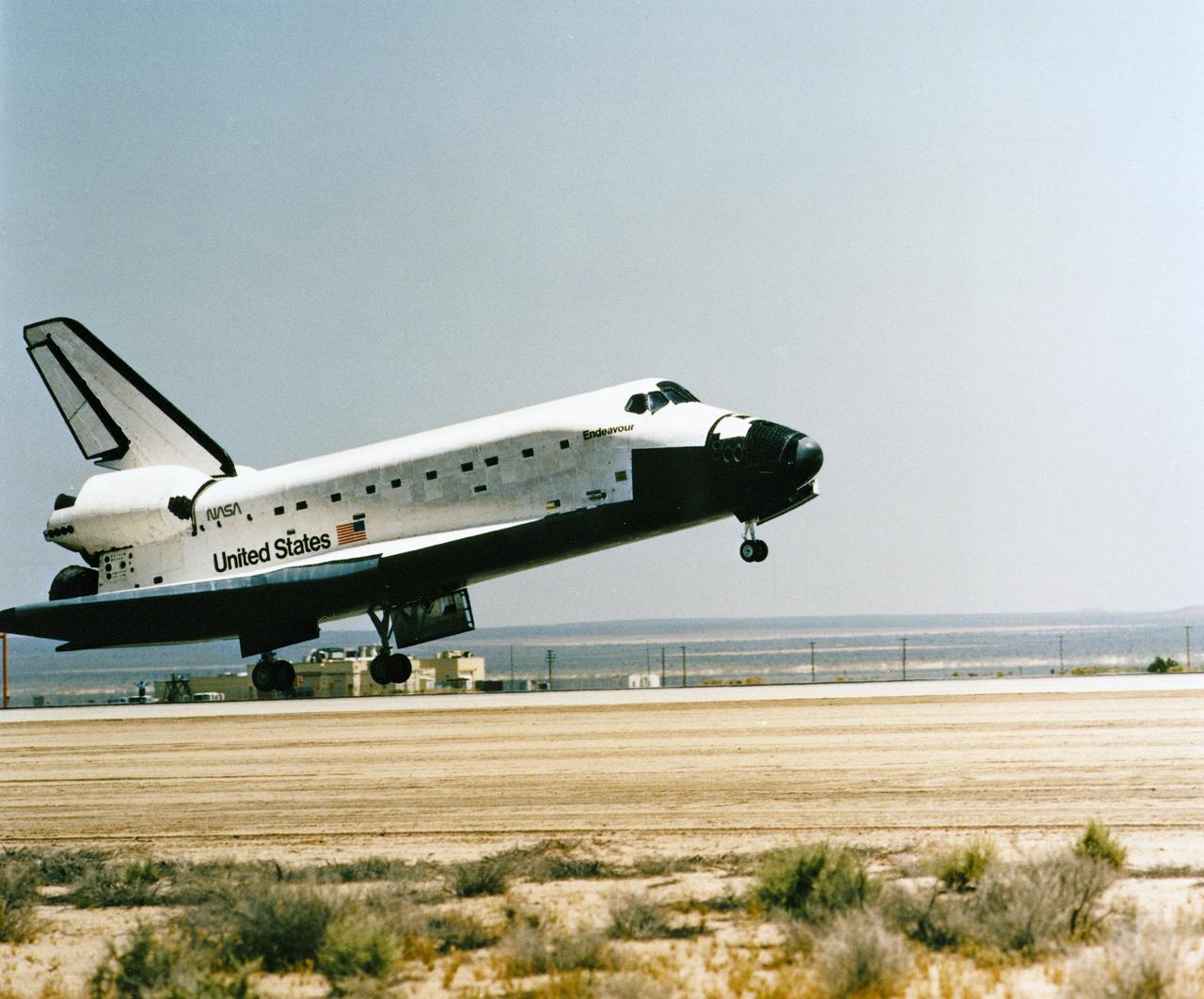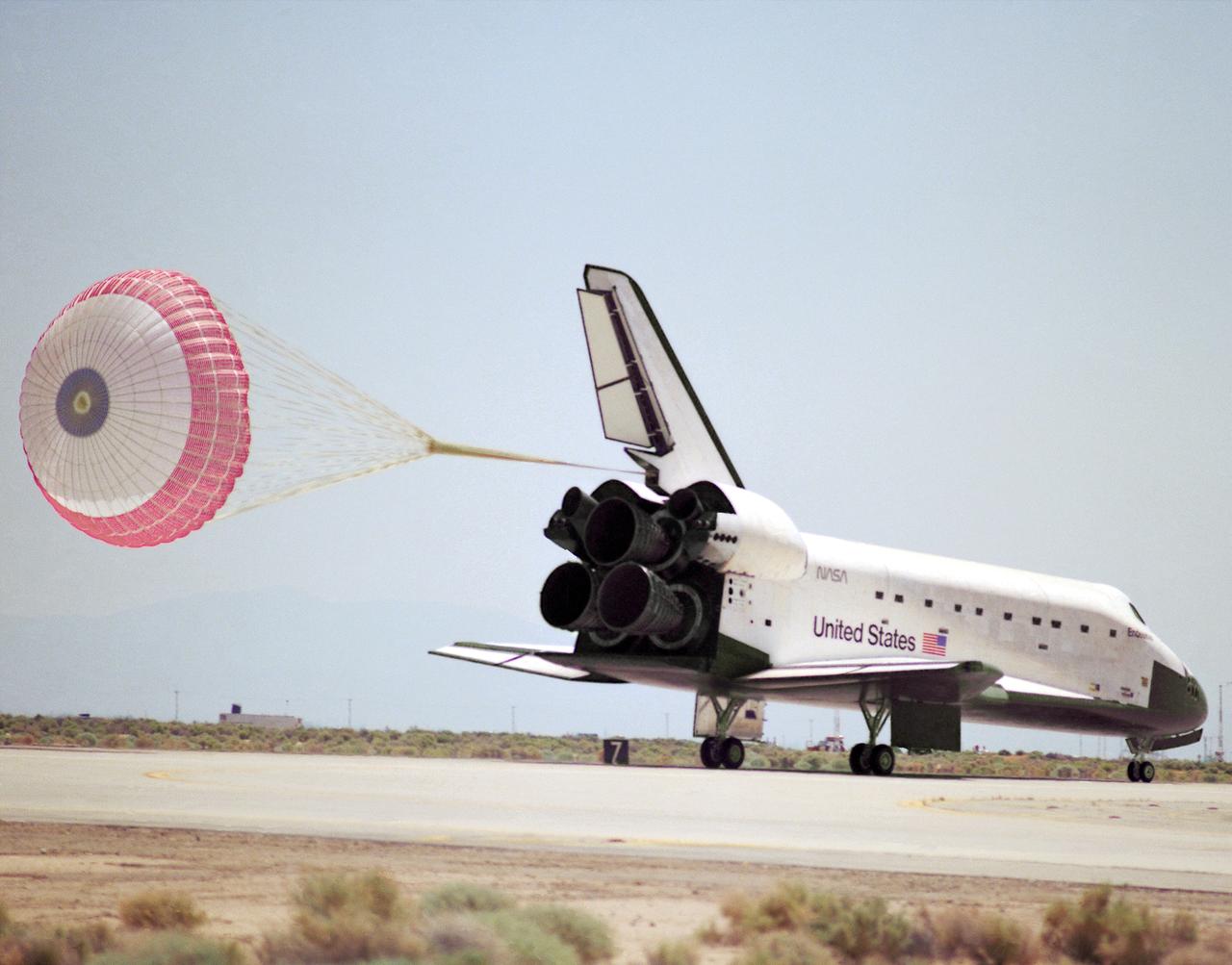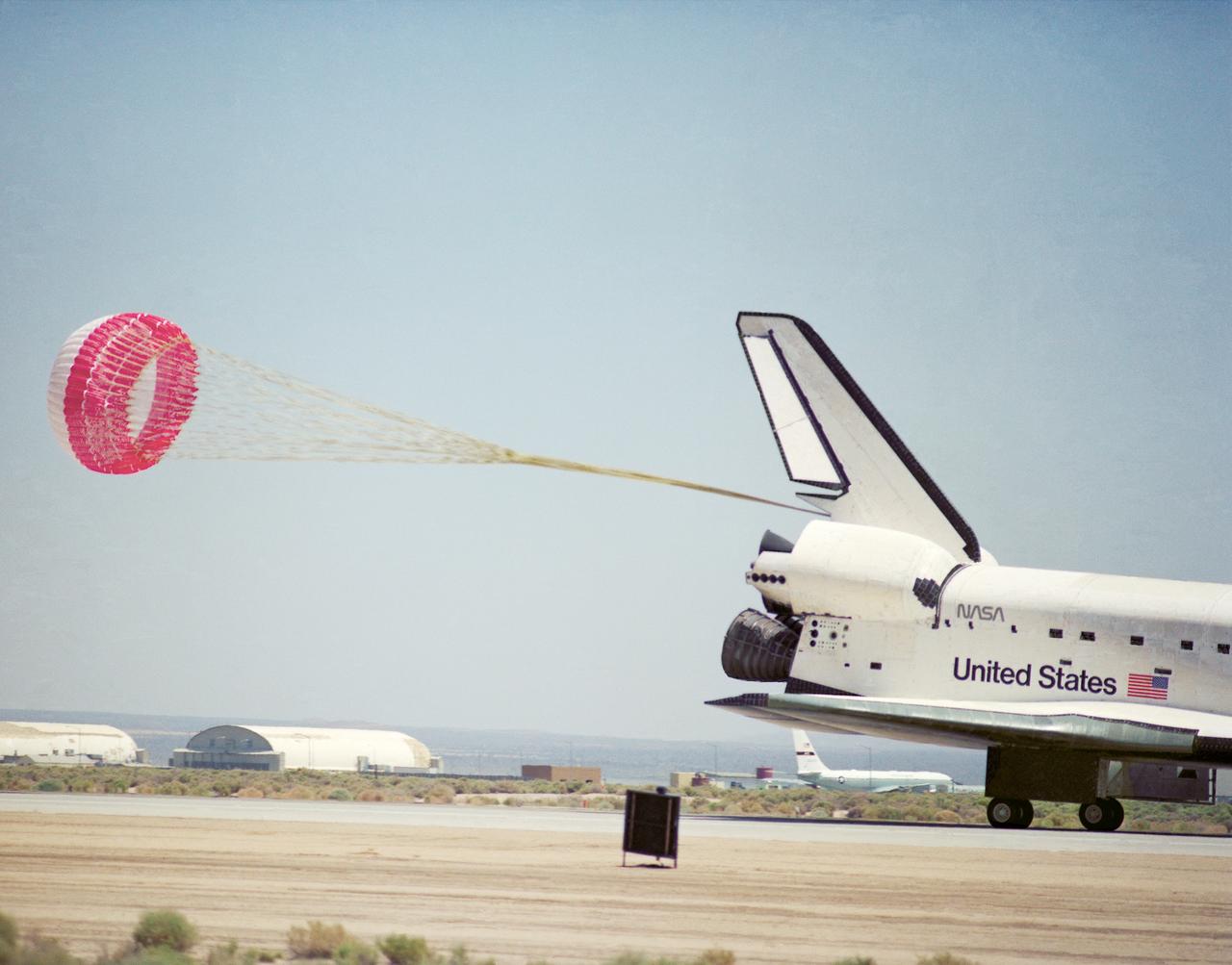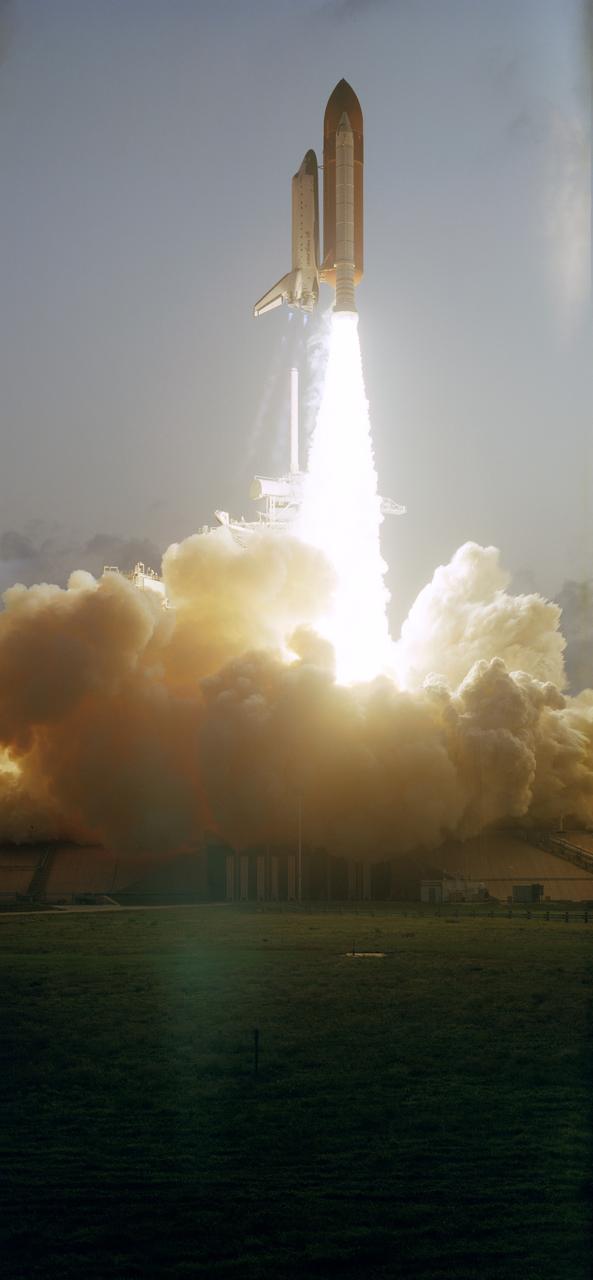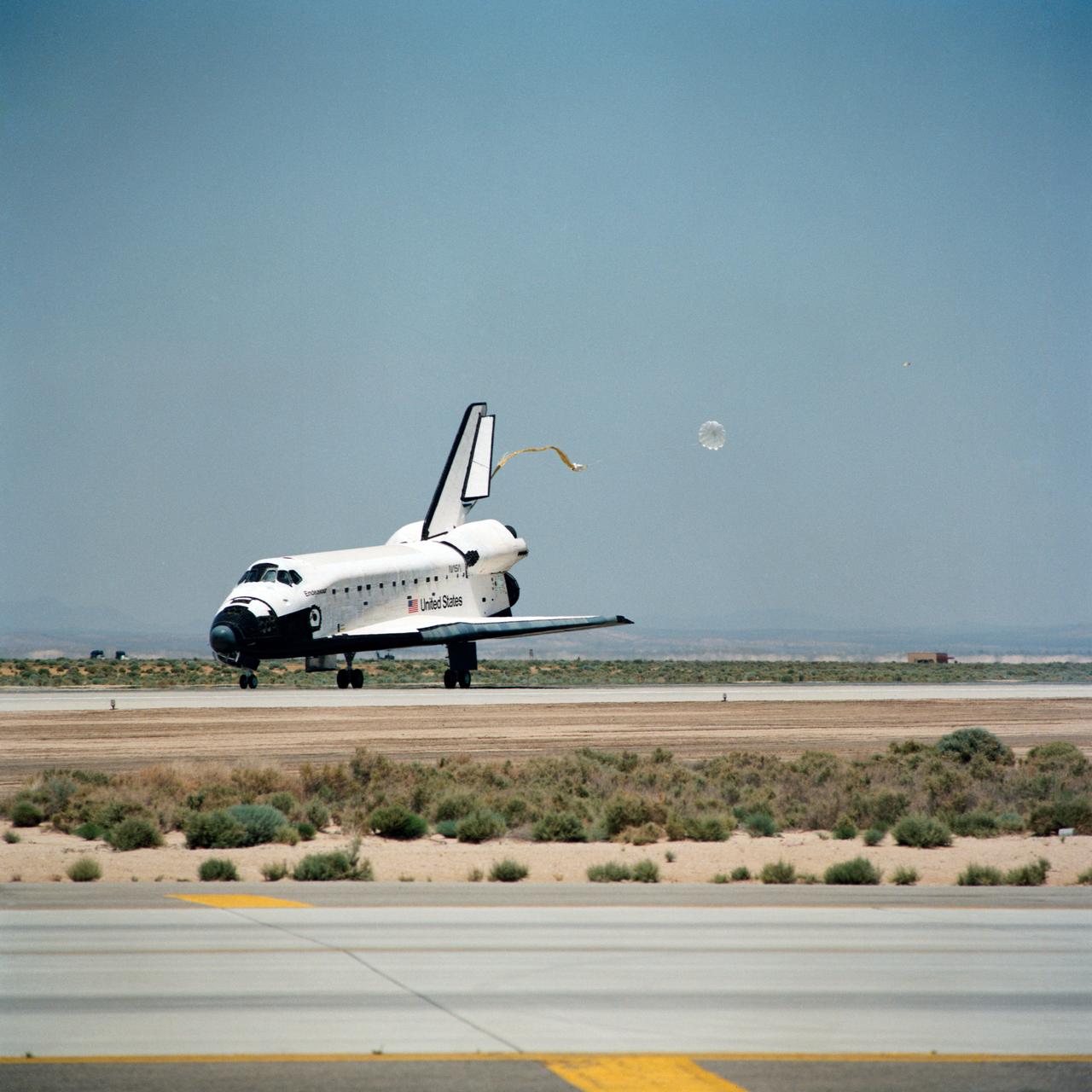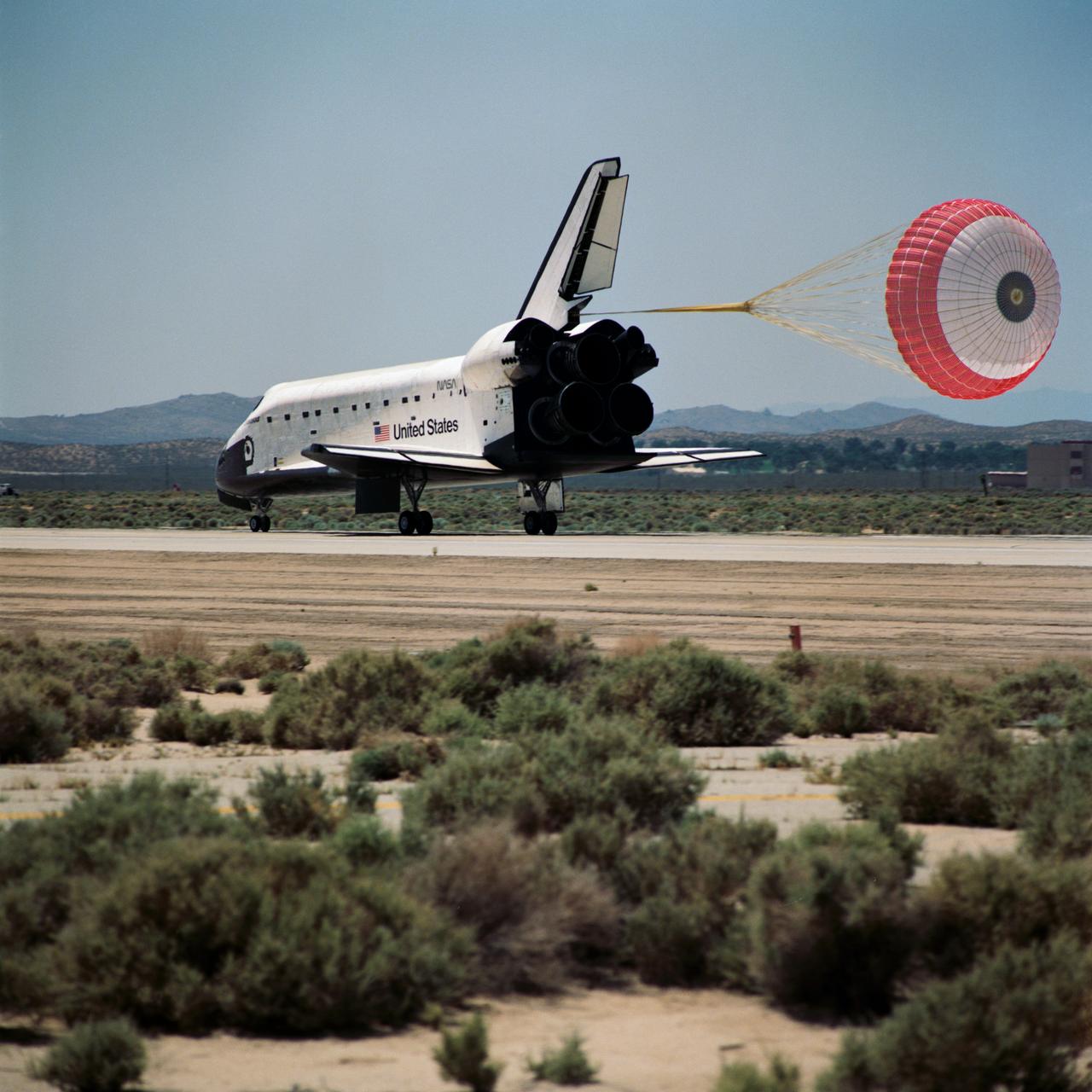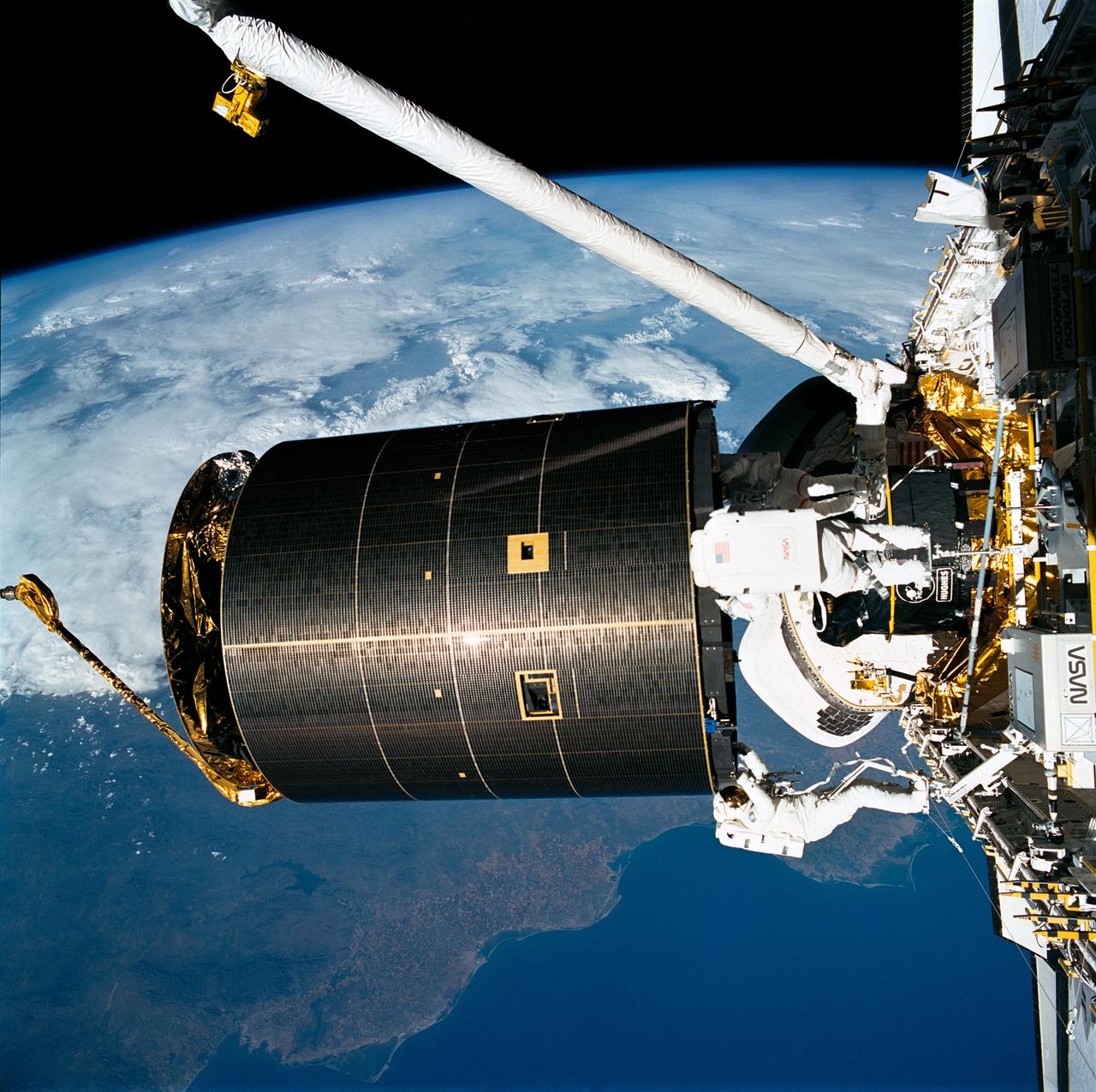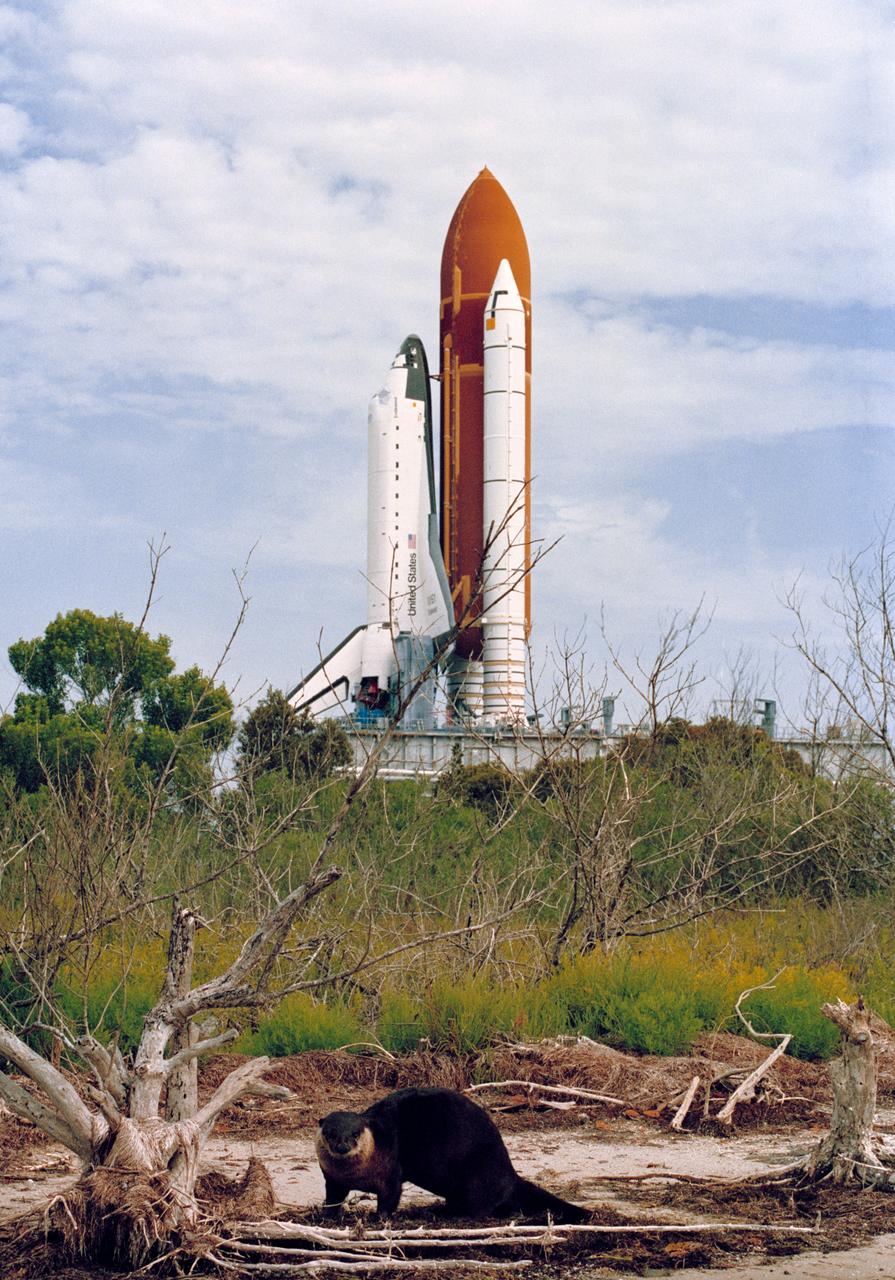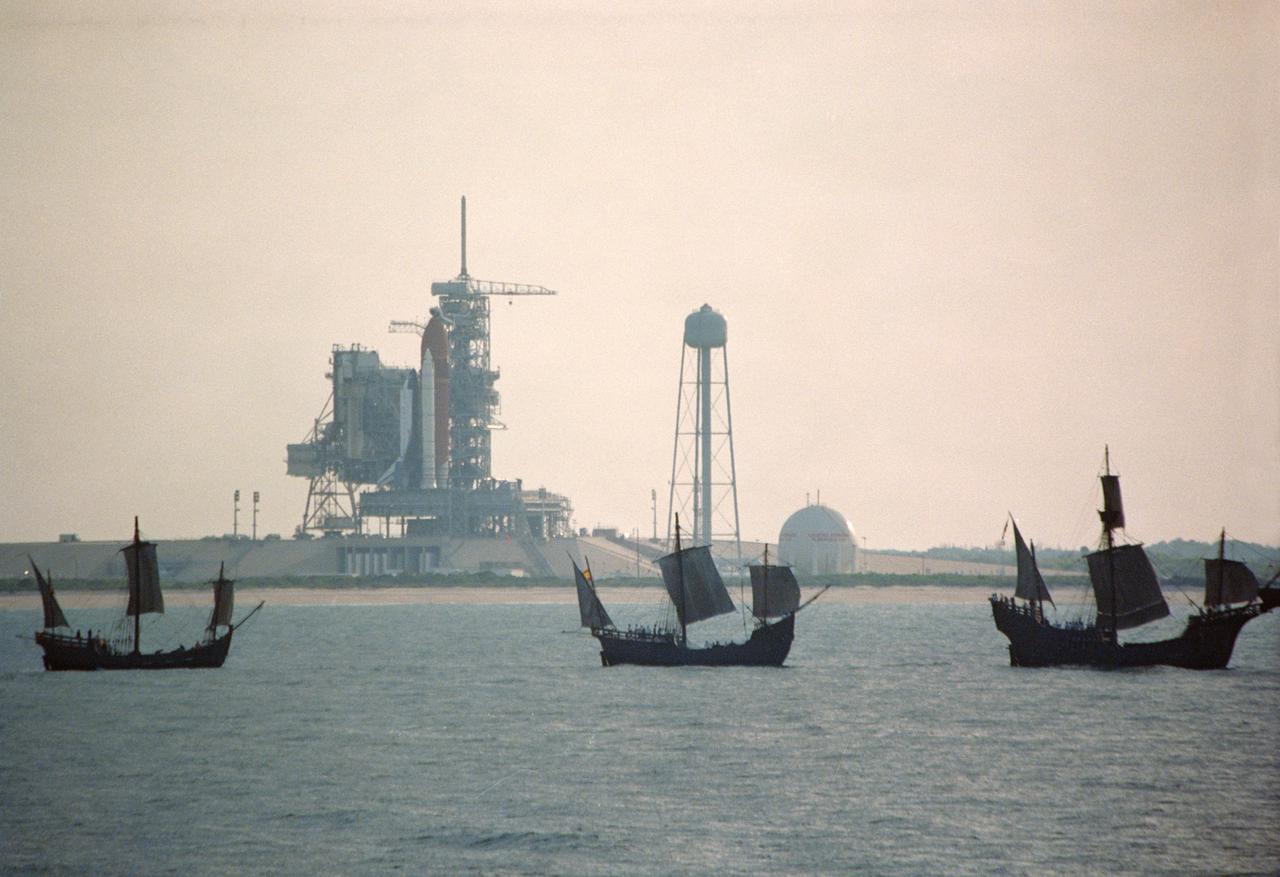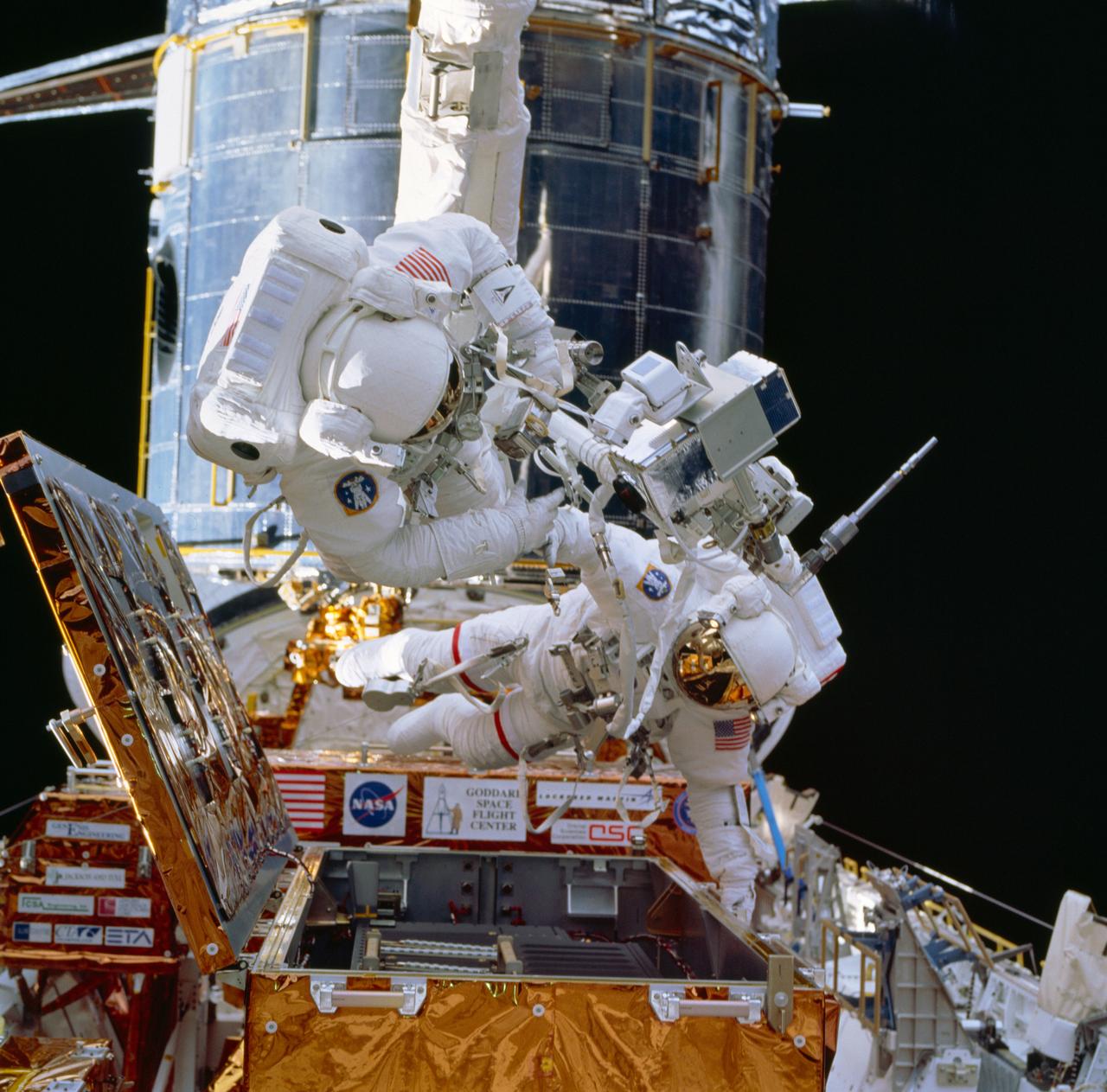STS-49 Fact Sheet
By Cliff Lethbridge

STS-49 — Endeavour
47th Space Shuttle Mission
1st Flight of Endeavour
Crew:
Daniel C. Brandenstein, Commander
Kevin P. Chilton, Pilot
Bruce E. Melnick, Mission Specialist
Thomas D. Akers, Mission Specialist
Richard J. Hieb, Mission Specialist
Kathryn C. Thornton, Mission Specialist
Pierre J. Thuot, Mission Specialist
Orbiter Preparations:
Tow to Vehicle Assembly Building (For Manufacturing) – May 8, 1991
Rollover to Orbiter Processing Facility (STS-49 Flow) – July 25, 1991
Rollover to Vehicle Assembly Building – March 7, 1992
Rollout to Launch Pad 39B – March 13, 1992
Launch:
May 7, 1992 – 7:40:00 p.m. EDT. Following the Flight Readiness Firing of Endeavour’s three main engines on April 6, 1992, Shuttle managers decided to replace all three main engines due to irregularities detected in two high pressure main engine oxidizer turbopumps. This operation did not impact Endeavour’s launch date.
Launch was originally scheduled for May 4, 1992 but was bumped to May 7, 1992 to employ an earlier launch window with better daylight conditions in which to photograph orbiter behavior during its maiden launch. May 7 launch was delayed 34 minutes due to poor transoceanic abort site weather and a technical glitch with an orbiter master events controller.
Landing:
May 16, 1992 – 1:57:38 p.m. PDT at Runway 22, Edwards Air Force Base, California. Rollout distance was 9,490 feet. Rollout time was 58 seconds. Mission duration was 8 days, 21 hours, 17 minutes, 38 seconds. Landing occurred during the 141st orbit.
For the first time in the Space Shuttle program, a drag chute was deployed during landing operations, although it was deployed after nosegear touchdown for test purposes.
Mission Summary:
In addition to being the first flight of Endeavour, other important “firsts” occurred during the mission. For the first time, four spacewalks were conducted during a Space Shuttle mission. Also for the first time, three astronauts participated in a single spacewalk. In addition, astronauts attached a live rocket motor to an orbiting satellite for the first time.
Astronauts Thuot and Hieb conducted the first spacewalk of the mission on May 10, 1992. The primary task during this spacewalk was to have been the capture of the INTELSAT VI (F3) satellite, left in a useless orbit following a Commercial Titan III rocket failure on March 14, 1990.
During the first spacewalk, the astronauts were unable to successfully attach a capture bar device to the satellite because the satellite began to wobble. After trying three times, additional attempts to capture the satellite were abandoned, and the spacewalk lasted 3 hours, 43 minutes.
Satellite ground controllers were able to dampen the wobbling of the satellite, and a second spacewalk by astronauts Thuot and Hieb was conducted on May 11, 1992. Again, the satellite began to wobble, and attempts to capture the satellite were abandoned after five unsuccessful tries. The second spacewalk lasted 5 hours, 30 minutes.
Satellite ground controllers were again able to stabilize the satellite, and a third spacewalk was conducted on May 13, 1992. This time, astronaut Akers joined astronauts Thuot and Hieb. NASA rightfully believed a third set of hands would help stabilize the satellite, allowing it to be captured.
The theory proved correct, and the astronauts successfully captured the satellite. They attached a new perigee kick motor to the satellite and prepared it for re-deployment. The marathon third spacewalk lasted 8 hours, 29 minutes. INTELSAT VI (F3) was later boosted to its proper orbit.
A fourth spacewalk was performed to test space station Assembly of Station by EVA (Extravehicular Activity) Methods (ASEM). This spacewalk was conducted on May 14, 1992 by astronauts Thornton and Akers. A number of space station assembly techniques were tested during a spacewalk which lasted 7 hours, 44 minutes.
A second ASEM spacewalk had been originally planned. If conducted, it would have been the fifth spacewalk of the mission. However, this spacewalk was canceled due to the additional time taken to capture, repair and re-deploy the INTELSAT VI (F3) satellite.
Payloads included the Commercial Protein Crystal Growth (CPEG), Ultraviolet Plume Instrument (UVPI) and Air Force Maui Optical Site (AMOS) experiments.
SELECTED NASA PHOTOS FROM STS-49
